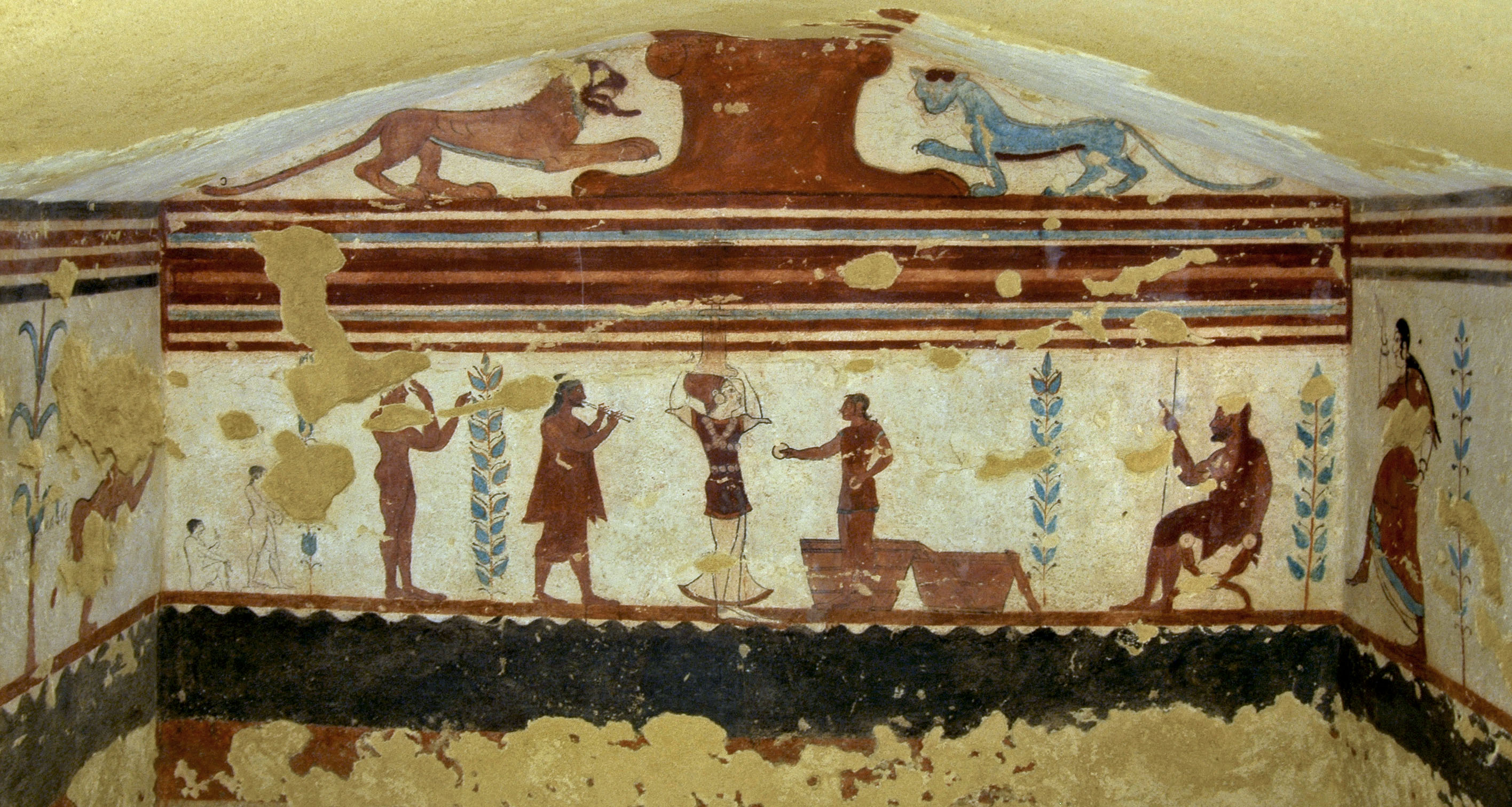
Wall-painting of the Jugglers Tomb in Tarquinia.
Tarquinia, Tomb of the Jugglers.
 TOMBA DEI GIOCOLIERI
TOMBA DEI GIOCOLIERI
Anno di rinvenimento: 1961. Datazione: Intorno al 510 a.C.
È costituita da una camera unica con dromos a gradini e soffitto a doppio spiovente.
Decorazione: Il frontone della parete di fondo presenta ai lati del sostegno della travatura centrale una pantera dipinta in azzurro ed un leone in rosso.
Al centro della parete è la rappresentazione dei giochi funebri in onore del defunto rappresentato sulla destra seduto su di uno sgabello in qualità di spettatore e giudice che osserva un giovane acrobata, una equilibrista con un candelabro sulla testa ed un suonatore di doppio flauto. Sulla parete destra è un suonatore di siringa tra due coppie di danzatrici. Sulla parete sinistra sono: un giovane nudo, un uomo in corsa, un uomo anziano barbato con bastone sorretto da un giovanetto, due volatili ed un uomo che defeca alle cui spalle è l’iscrizione aranth heracanasa variamente interpretata.
Il tema dei giochi di acrobati ed equilibristi può avere influenzato il pittore della chiusina tomba della Scimmia di qualche decennio posteriore.
 THE JUGGLERS TOMB
THE JUGGLERS TOMB
Year of discovery: 1961. Dated: around 510 B.C.
It is made up of a single chamber with a dromos with steps and a ceiling with double slope.
Decoration: the gable of the end wall depicts, at the sides of the support for the central beam, a panther painted in blue, and a lion in red. In the centre of the wall is the representation of the funerary games in honour of the deceased, who is depicted on the right sitting on a stool and acting as spectator and judge observing a young acrobat, someone doing a balancing act with a candlestick placed on his head, and a musician playing a double flute.
On the wall to the right is another musician with two pairs of female dancers.
On the wall to the left are: a naked young man, a running man, an old bearded man with a stick held up by a young lad, two fowl and a defecating man, behind which is the inscription aranth heracanasa, which has been variously interpreted.
The theme of the games of acrobats and jugglers may have influenced the painter of the Tomb of the Monkey at Chiusi, some decades more recent than this one.